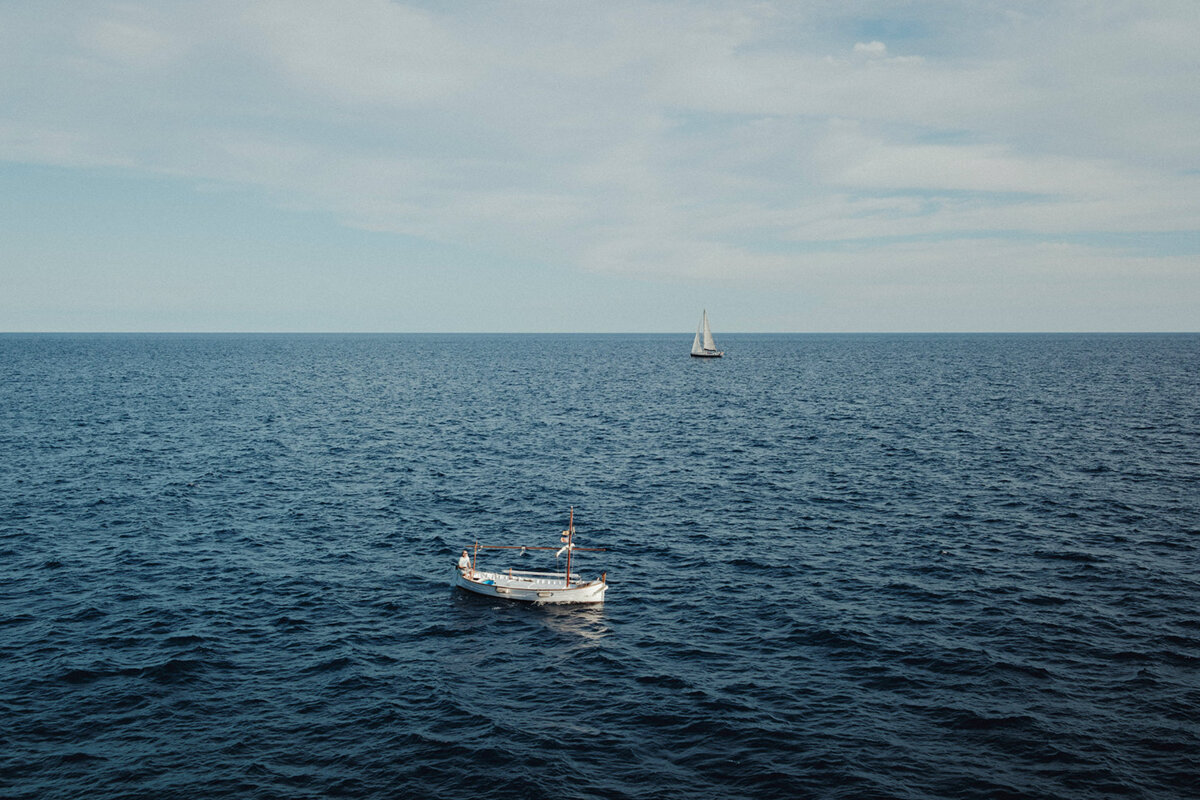The heatwave that has hung over much of France since early August, with temperatures well above 30° Celsius in much of the country and exceeding 40°C in parts of the south and south-west, has finally faded this week. It was the 51st heatwave recorded in France since 1947, and the second of this summer, marked by a proliferation of devastating wildfires, as was also the case in much of southern Europe, similarly affected by high temperatures.
Until now largely overlooked by the media but which also have catastrophic consequences are marine heatwaves, or MHWs, which are prolonged, notably higher than normal temperatures of the surface of the sea. According to Mercator Ocean International, a French-based, non-profit, marine studies organisation, which is engaged on separate forecasting projects by the United Nations and the European Union, the surface temperatures of the Mediterranean over the first half of 2025 were the hottest on record.
That included an average sea surface temperature (SST) of 24°C in June (during the first atmospheric heatwave in France this year), beating a previous record in 2022, and reached an average 26.68° Celsius in July, when 95% of the Mediterranean was abnormally warm. During this month’s heatwave, the SSTs along France’s southern coastline and around the island of Corsica reached 29°C.
MHWs seriously upset marine eco-systems, as well as contributing to climate change which, in a viscous circle, is already their root cause.

Enlargement : Illustration 1

“The water is heating up more and more from one year to the next, especially in the Mediterranean, where it is estimated that the warming is at a rate of 0.4°C per decade compared with a worldwide average of 0.2°C per decade,” said Thibault Guinaldo, a researcher with France’s National Meteorological Research Centre. “That is notably explained by the fact that it is a semi-closed sea which has little interconnection with the waters of the Atlantic.”
Two principal phenomena cause MHWs. The first of these is the high temperature of the atmosphere, coupled with strong sunshine from a clear sky, and the absence of wind – which is a major driver of the churning over of sea water. All of which leads to the accumulation of heat at the surface.
The second is climate change, which accentuates the temperature differential between surface and deep water. “As a consequence, we see fewer vertical exchanges between these waters, which warms them up,” said Thibault Guinaldo. “In short, there is a lot of energy that arrives into the oceanic system, and in parallel there are unfavourable conditions for this heat to be redistributed.”
Scientific studies have estimated that the upper layers of seawater have absorbed around 90% of excess heat generated by human activity. In that regard, the waters of the planet are on the frontline of climate chaos due to their role as a heat reservoir. The result is that the number of MHWs observed around the globe has doubled since 1982.
Worse still, even if climate warming is limited to 2°C, MHWs will be 20 times more frequent, while they will be 50 times more frequent if gas emissions continue to rise significantly, according to a 2019 report on “the ocean and cryosphere in a changing climate” by the UN’s Intergovernmental Panel on Climate Change (IPCC).
Like heatwaves on land, MHWs are not only increasing in frequency, but they are also becoming longer in duration. According to the IPCC, the number of recorded MHWs has jumped by 54% since the beginning of the century.
Ecological disaster
MHWs have catastrophic consequences for marine biodiversity. “I’m currently involved in studying the communities of phytoplankton, and we clearly observe migrations towards the poles, because the waters are becoming more favourable for their development, notably towards the Barents Sea, bordering on the Arctic Ocean,” said Guinaldo.
“Climate change is causing an increase in the frequency and intensity of marine heatwaves (MHWs), and mass mortality events (MMEs) of marine organisms are one of their main ecological impacts,” wrote the authors of a scientific study focusing on MHWs and their impact on the Mediterranean basin, published in July 2022 by the scientific journal Global Change Biology. The scientific team found evidence of the mass mortality of marine organisms in the Mediterranean, as a direct consequence of MHWs, along thousands of kilometres of coastlines and from the surface water to a depth of 45 metres.
Between 2015 and 2019, MHWs in the Mediterranean caused the disappearance of around 50 types of sponge, several types of coral and also of molluscs. “Our findings reveal that the Mediterranean Sea is experiencing an acceleration of the ecological impacts of MHWs which poses an unprecedented threat to its ecosystems' health and functioning,” reported the study.
Guinaldo concluded: “What we thought was exceptional during the heatwave of 2003 is unfortunately in the process of becoming recurrent from one year to the next.”
-------------------------
- The original French version of this report can be found here.
English version by Graham Tearse


